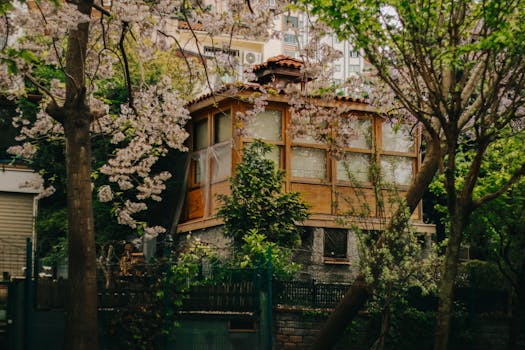
Urban Green Spaces: The Future of Outdoor Living in European Cities by 2025
Urban Green Spaces are becoming increasingly important in European cities, and by 2025, they will play a vital role in shaping the future of outdoor living. With the rising concerns of climate change, urbanization, and public health, urban green spaces are no longer just a luxury, but a necessity. In this article, we will explore the significance of urban green spaces, their benefits, and how they will transform the way we live, work, and interact in European cities.
What are Urban Green Spaces?
Urban green spaces refer to areas in cities that are dedicated to nature, such as parks, gardens, green roofs, and green walls. These spaces provide a range of ecosystem services, including air and water purification, climate regulation, and habitat creation for urban wildlife. Urban green spaces can be found in various forms, from small pocket parks to large urban forests, and they can be managed by local authorities, community groups, or private organizations.
Benefits of Urban Green Spaces
The benefits of urban green spaces are numerous and well-documented. Some of the most significant advantages include:
- Improved air quality: Urban green spaces can absorb pollutants and particulate matter, improving the air quality and public health.
- Climate regulation: Urban green spaces can help mitigate the urban heat island effect, reducing the temperature and energy consumption in cities.
- Mental health and wellbeing: Spending time in urban green spaces can reduce stress, improve mood, and enhance cognitive function.
- Biodiversity conservation: Urban green spaces can provide habitat for urban wildlife, supporting local biodiversity and ecosystem services.
- Community engagement: Urban green spaces can serve as community hubs, fostering social connections, and a sense of belonging among residents.
The Future of Urban Green Spaces in European Cities
By 2025, urban green spaces will play a critical role in shaping the future of outdoor living in European cities. As cities continue to grow and urbanize, the demand for green spaces will increase, and innovative solutions will be needed to meet this demand. Some of the trends that will shape the future of urban green spaces include:
- Green infrastructure: The integration of green spaces into urban infrastructure, such as green roofs, green walls, and urban forests.
- Community-led initiatives: Community groups and residents will take a more active role in designing, managing, and maintaining urban green spaces.
- Technological innovations: The use of technology, such as smart sensors, and data analytics, to monitor and manage urban green spaces, improving their efficiency and effectiveness.
- Policy and planning: Urban green spaces will be prioritized in urban planning, with a focus on creating green corridors, and connecting fragmented green spaces.
Case Studies: Urban Green Spaces in European Cities
Several European cities are already leading the way in urban green space development, and their experiences can serve as models for other cities. Some notable examples include:
- Barcelona’s Superblock program: A pioneering initiative that has transformed the city’s streets into green spaces, reducing traffic, and improving air quality.
- Copenhagen’s green roof policy: A policy that requires all new buildings to have green roofs, providing insulation, and habitat for urban wildlife.
- London’s Urban Forest: A initiative that aims to increase the city’s tree cover, improving air quality, and mitigating the urban heat island effect.
Conclusion
Urban green spaces are the future of outdoor living in European cities, and by 2025, they will play a vital role in shaping the way we live, work, and interact. As cities continue to grow and urbanize, it is essential to prioritize urban green spaces, and to develop innovative solutions to meet the increasing demand for these spaces. By learning from the experiences of other cities, and by embracing new technologies, and community-led initiatives, we can create sustainable, resilient, and thriving urban ecosystems, that benefit both people and the environment.